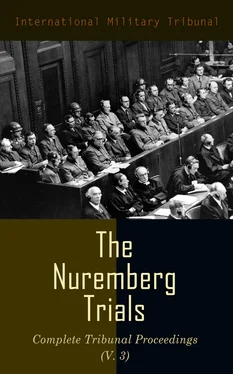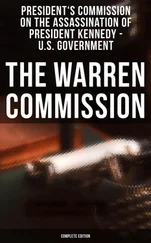On the 11th of April Hitler issued his directive for the uniform preparation of the war by the Armed Forces, 1939-40, and in it he said:
“I shall lay down in a later directive future tasks of the Armed Forces and the preparations to be made in accordance with these for the conduct of war. Until that directive comes into force the Armed Forces must be prepared for the following eventualities:
“1. Safeguarding of the frontiers . . .
“2. Fall Weiss,
“3. The annexation of Danzig.”
Then, in an annex to that document which bore the heading “Political Hypotheses and Aims,” it was stated that quarrels with Poland should be avoided. But should Poland change her policy and adopt a threatening attitude towards Germany, a final settlement would be necessary, notwithstanding the Polish Pact. The Free City of Danzig was to be incorporated in the Reich at the outbreak of the conflict at the latest. The policy aimed at limiting the war to Poland, and this was considered possible at that time with the internal crises in France and resulting British restraint.
The wording of that document—and the Tribunal will study the whole of it—does not directly involve the intention of immediate aggression. It is a plan of attack “if Poland changes her policy and adopts a threatening attitude.” But the picture of Poland, with her wholly inadequate armaments, threatening Germany, now armed to the teeth, is ludicrous enough, and the real aim of the document emerges in the sentence—and I quote: “The aim is then to destroy Polish military strength and to create, in the East, a situation which satisfies the requirements of defense”—a sufficiently vague phrase to cover designs of any magnitude. But even at that stage, the evidence does not suffice to prove that the actual decision to attack Poland on any given date had yet been taken. All the preparations were being set in train. All the necessary action was being proceeded with, in case that decision should be reached.
It was within 3 weeks of the issue of that last document that Hitler addressed the Reichstag on the 28th of April 1939. In that speech he repeated the demands which had already been made upon Poland, and proceeded to denounce the German-Polish Agreement of 1934. Leaving aside, for the moment, the warlike preparations for aggression, which Hitler had set in motion behind the scenes, I will ask the Tribunal to consider the nature of this denunciation of an agreement to which, in the past, Hitler had attached such importance.
In the first place, of course, Hitler’s denunciation was per se ineffectual. The text of the agreement made no provision for its denunciation by either party until a period of 10 years had come to an end. No denunciation could be legally effective until June or July of 1943, and here was Hitler speaking in April of 1939, rather more than 5 years too soon.
In the second place, Hitler’s actual attack upon Poland, when it came on 1 September was made before the expiration of the 6 months’ period after denunciation required by the agreement before any denunciation could be operative. And in the third place, the grounds for the denunciation stated by Hitler in his speech to the Reichstag were entirely specious. However one reads its terms, it is impossible to take the view that the Anglo-Polish guarantee of mutual assistance against aggression could render the German-Polish Pact null and void, as Hitler sought to suggest. If that had been the effect of the Anglo-Polish assurances, then certainly the pacts which had already been entered into by Hitler himself with Italy and with Japan had already invalidated the treaty with Poland. Hitler might have spared his breath. The truth is, of course, that the text of the English-Polish communiqué, the text of the assurances, contains nothing whatever to support the contention that the German-Polish Pact was in any way interfered with.
One asks: Why then did Hitler make this trebly invalid attempt to denounce his own pet diplomatic child? Is there any other possible answer but this:
That the agreement having served its purpose, the grounds which he chose for its denunciation were chosen merely in an effort to provide Germany with some kind of justification—at least for the German people—for the aggression on which the German leaders were intent.
And, of course, Hitler sorely needed some kind of justification, some apparently decent excuse, since nothing had happened, and nothing seemed likely to happen, from the Polish side, to provide him with any kind of pretext for invading Poland. So far he had made demands upon his treaty partner which Poland, as a sovereign state, had every right to refuse. If dissatisfied with that refusal, Hitler was bound, under the terms of the agreement itself, “To seek a settlement”—I am reading the words of the pact:
“To seek a settlement through other peaceful means, without prejudice to the possibility of applying those methods of procedure, in case of necessity, which are provided for such a case in the other agreements between them that are in force.”
And that presumably was a reference to the German-Polish Arbitration Treaty, signed at Locarno in 1925.
The very facts, therefore, that as soon as the Nazi leaders cannot get what they want but are not entitled to from Poland by merely asking for it and that, on their side, they made no further attempt to settle the dispute “by peaceful means”—in accordance with the terms of the agreement and of the Kellogg Pact, to which the agreement pledged both parties—in themselves constitute a strong presumption of aggressive intentions against Hitler and his associates. That presumption becomes a certainty when the documents to which I am about to call the attention of the Tribunal are studied.
On the 10th of May Hitler issued an order for the capture of economic installations in Poland. On the 16th of May the Defendant Raeder, as Commander-in-Chief of the Navy, issued a memorandum setting out the Führer’s instructions to prepare for the operation Fall Weiss at any time from the 1st of September.
But the decisive document is the record of the conference held by Hitler on the 23rd of May 1939, in conference with many high-ranking officers, including the Defendants Göring, Raeder, and Keitel. The details of the whole document will have to be read to the Tribunal later and I am merely summarizing the substantial effect of this part of it now. Hitler stated that the solution of the economic problems with which Germany was beset at first, could not be found without invasion of foreign states and attacks on foreign property. “Danzig”—and I am quoting:
“Danzig is not the subject of the dispute at all. It is a question of expanding our living space in the East. There is, therefore, no question of sparing Poland, and we are left with the decision to attack Poland at the earliest opportunity. We cannot expect a repetition of the Czech affair. There will be fighting. Our task is to isolate Poland. The success of this isolation will be decisive. The isolation of Poland is a matter of skillful politics.”
So he explained to his confederates. He anticipated the possibility that war with England and France might result, but a two-front war was to be avoided if possible. Yet England was recognized—and I say it with pride—as the most dangerous enemy which Germany had. “England,” he said, I quote, “England is the driving force against Germany . . . the aim will always be to force England to her knees.” More than once he repeated that the war with England and France would be a life and death struggle. “But all the same,” he concluded, “Germany will not be forced into war but she would not be able to avoid it.”
On the 14th of June 1939 General Blaskowitz, then Commander-in-Chief of the 3rd Army group, issued a detailed battle plan for the Fall Weiss. The following day Von Brauchitsch issued a memorandum in which it was stated that the object of the impending operation was to destroy the Polish Armed Forces. “High policy demands,” he said, “High policy demands that the war should be begun by heavy surprise blows in order to achieve quick results.” The preparations proceeded apace. On the 22d of June the Defendant Keitel submitted a preliminary timetable for the operation, which Hitler seems to have approved, and suggested that the scheduled maneuver must be camouflaged, “in order not to disquiet the population.” On the 3rd of July, Brauchitsch wrote to the Defendant Raeder urging that certain preliminary naval moves should be abandoned, in order not to prejudice the surprise of the attack. On the 12th and 13th of August Hitler and Ribbentrop had a conference with Ciano, the Italian Foreign Minister.
Читать дальше












